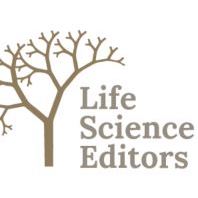Transcription factor FOXM1 specifies the loading of chromatin DNA to extracellular vesicles
This article has been Reviewed by the following groups
Discuss this preprint
Start a discussion What are Sciety discussions?Listed in
- Evaluated articles (Life Science Editors)
Abstract
Extracellular vesicle DNAs (evDNAs) possess the important diagnostic value for multiple diseases and play roles for horizontally transferring genetic materials among cells. In this study, we have found that transcription factor FOXM1 can mediate the loading of certain chromatin genes or DNA fragments (named FOXM1-chDNAs) to extracellular vesicles (EVs). FOXM1 interacts with LC3 in nucleus and FOXM1-chDNAs (such as DUX4 gene and Telomere DNA) are specified by FOXM1 and translocated to cytoplasm. These DNAs are released to EVs through the process of an LC3-involved autophagosome-multivesicular body (MVB) transport. The roles of FOXM1 on loading FOXM1-chDNAs to EVs are further confirmed by DNA-FISH experiments, tracing the translocation of selected chromatin loci with the TetO/TetR-GFP method, and PCR analysis of the DNA samples from MVBs and EVs. Furthermore, disrupting the expression of FOXM1 or the process of autophagosome-MVB transport impairs the loading of FOXM1-chDNAs to EVs. This discovery suggests that transcription factor FOXM1 contributes the constitution of evDNAs from nuclear chromatin, providing the first example to explain how chromatin DNA fragments are specified and loaded to EVs. It also provide a foundation to further explore the roles of evDNAs in biological processes such as the horizontal gene transfer.
Article activity feed
-

Review coordinated by Life Science Editors
Reviewed by: Dr. Helen Pickersgill, Life Science Editors
Potential Conflicts of Interest: None
Impact Point: Transcription factors may mediate the release of specific genes in extracellular vesicles that could be taken up by other cells and directly influence their behaviour.
Background: Extracellular vesicles (EVs) are nanoscale, membrane-bound vesicles containing proteins, nucleic acids and lipids that are released by most cell types. Originally thought of as a cell waste disposal mechanism, they have since been rebranded as a means of intercellular communication, both short and long range, (like a cellular postal service), and can, for example, modify gene expression and function in recipient cells via the transfer of specific RNAs (DOI: 10.1038/s41580-020-0251-y). One interesting function …
Review coordinated by Life Science Editors
Reviewed by: Dr. Helen Pickersgill, Life Science Editors
Potential Conflicts of Interest: None
Impact Point: Transcription factors may mediate the release of specific genes in extracellular vesicles that could be taken up by other cells and directly influence their behaviour.
Background: Extracellular vesicles (EVs) are nanoscale, membrane-bound vesicles containing proteins, nucleic acids and lipids that are released by most cell types. Originally thought of as a cell waste disposal mechanism, they have since been rebranded as a means of intercellular communication, both short and long range, (like a cellular postal service), and can, for example, modify gene expression and function in recipient cells via the transfer of specific RNAs (DOI: 10.1038/s41580-020-0251-y). One interesting function for EVs was the recent discovery that antigen presenting cells (APCs) could donate telomeres via EVs to recipient T cells and rescue them from senescence (DOI: 10.1038/s41556-022-00991-z).
Given EVs contain a wide variety of cargos derived from the secreting cells, which have been extensively profiled (e.g., DOI: 10.1016/j.cell.2020.07.009) they are particularly interesting as sources of biomarkers for diagnosing diseases such as cancer (e.g., DOI: 10.1038/s12276-019-0219-1). We might also be able to use them as stable delivery mechanisms for controlling cell behaviour or targeting therapeutics/diagnostics.
We know quite a bit about how RNAs and proteins are selected for secretion by EVs (mediated by the autophagy protein LC3: e.g., DOIs: 10.1080/15548627.2020.1756557; 10.1038/s41556-019-0450-y). But little is known about DNA. DNA presents a particular challenge as it is packed up into the nucleus. This is also particularly important to understand in the context of horizontal gene transfer, i.e., passing functional genes between cells.
Main question: How does a cell ‘select’ specific DNA cargo from the nucleus and enable it to be released by EVs?
**The advance: **They discover that a transcription factor (FOXM1) plays a central role in mediating DNA release in EVs.
Results: • FOXM1 and LC3 (autophagy protein) colocalize and interact in cultured cells (coIP endogenous and exogenous, EMSA, immunostaining and identify an FOXM1-binding domain mutant). • FOXM1, LC3 and DNA colocalise in the cytoplasm in cultured cells, which increases upon starvation-induced autophagy (immunofluorescence). • FOXM1 and LC3 are found in EVs released from cultured cells (Western blot). • 15,544 DNA identified in EVs released from cultured cells (evDNA sequencing), of which 25 overlapped with DNA loci binding FOXM1 (ChIP). • FOXM1-bound nuclear DNA is transported to the cytoplasm upon induction of autophagy and is released in EVs in cultured cells (knock-in tagged chromatin with CRISPR-cas9, IF and PCR). This is dependent on FOXM1 (knock-out in cultured cells).
Significance: Transcription factors display strong DNA binding specificity and so are ideal candidates for directing specific genes into EVs for potential transfer to recipient cells.
Remaining questions/points: Care needs to be taken with regard to purification of EVs. Are the FOXM1-DNAs in the EVs functional in recipient cells? Is the DNA being actively ‘selected’ for an intercellular signalling purpose or is this just random degradation? Is it all FOXM1 bound DNA that has the potential to be trafficked to EVs or just a subset? Do other transcription factors have the same function or is it specific to this protein/family? Does this mechanism occur in other contexts (e.g., in vivo, under disease conditions).
-

